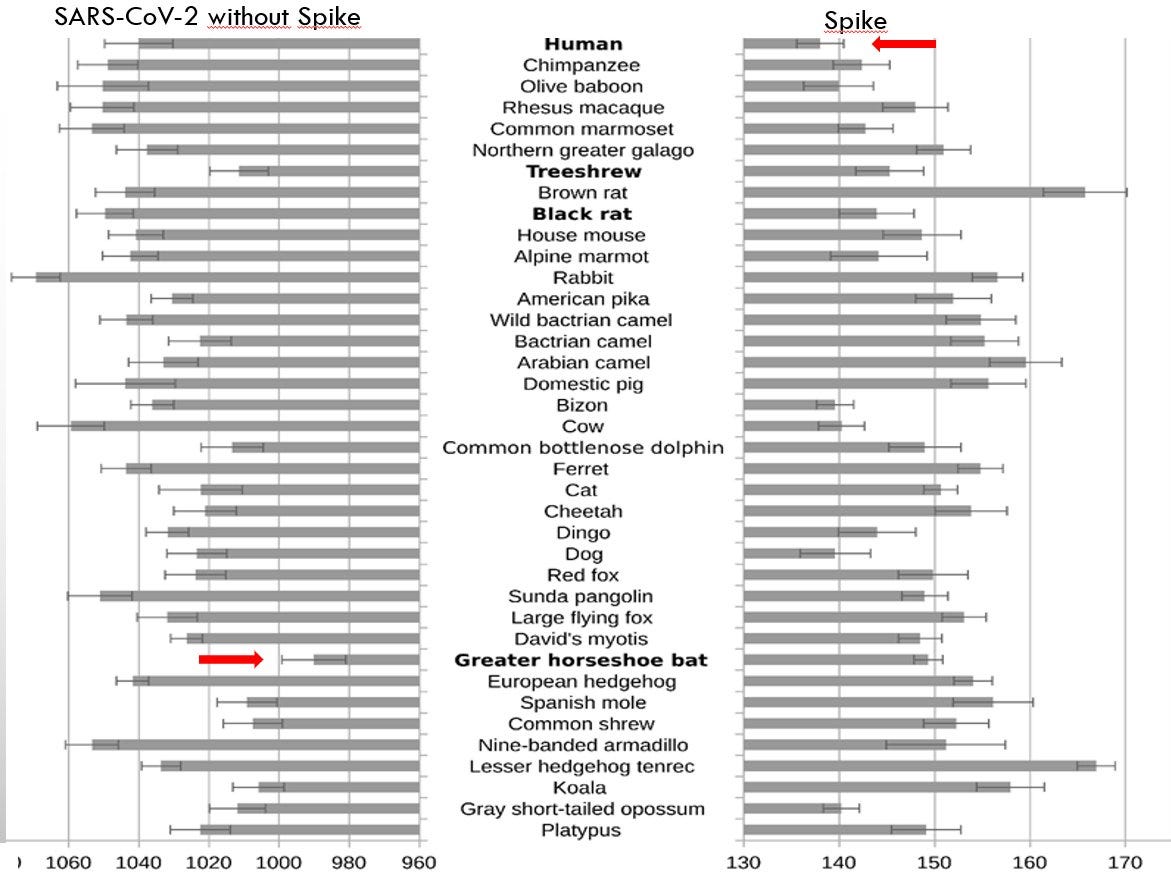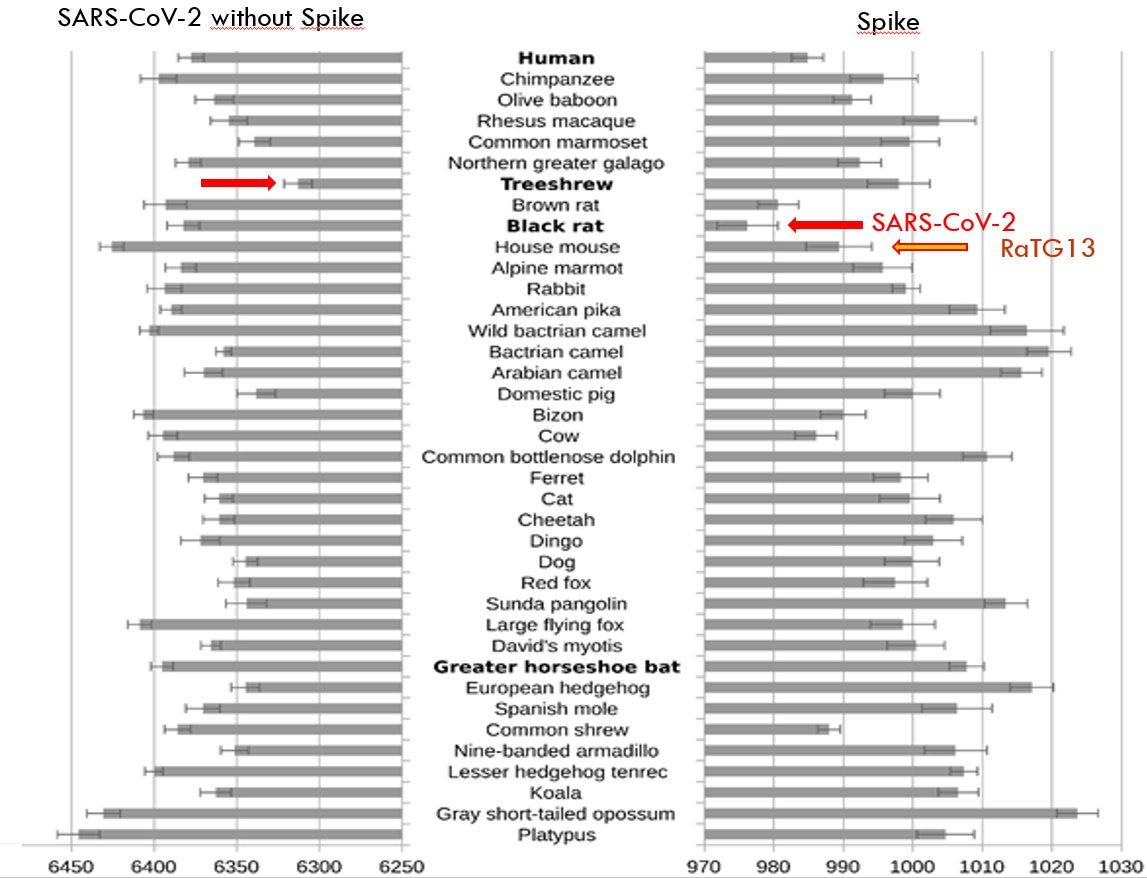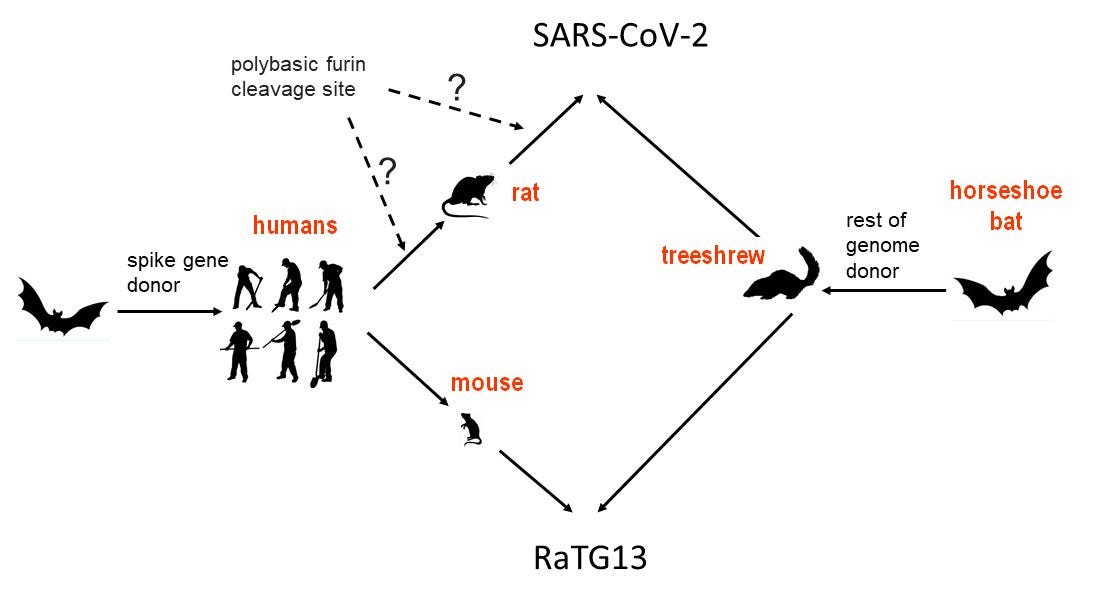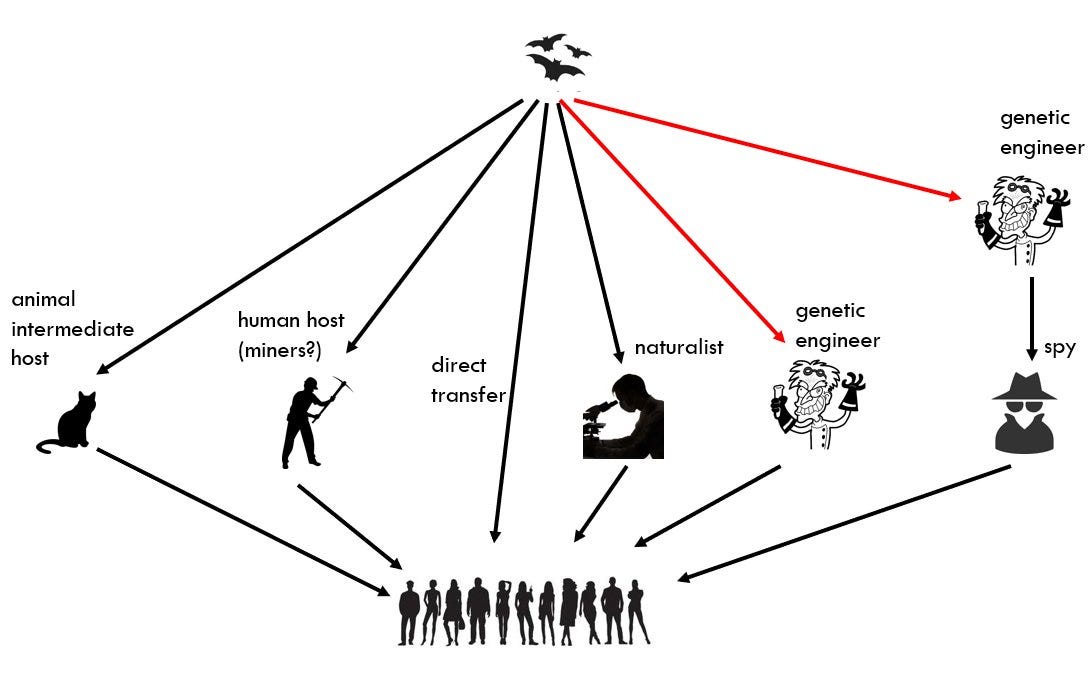Your support is very much appreciated. Please consider taking out a paid subscription to support independent journalism.
A paper recently published in Taylor & Francis - Communicative & Integrative Biology, places further doubt on the zoonotic origins of Covid. Whilst using a new method to find the original host of the ancestor of SARS-CoV-2, the authors found that the virus had been adapted to bats, BUT the spike was adapted to humans. Furthermore, they concluded that the coronavirus had been passaged in treeshrews, whilst the spike had been passaged in rats before recombination.
The zoonosis origin theory suggests that SARS-CoV-2 originated in bats which then transmitted to humans via an intermediate animal. The problem with this theory is that the spike protein is so well suited to humans but not to bats.
To be successful, a virus must not only infect a host’s cells but also outmanoeuvre its immune system. A host’s T-cells play a huge part in recognising and eliminating new viruses. They do this by identifying peptides that are present in the proteins of the virus but not in the proteins of the host. Peptides are short chains of amino acids linked together by peptide bonds.
More often than not, mature T-cells only recognise peptides that are not present in the host itself. It does this by carrying a population of identical molecules on its receptors with affinity to a particular peptide or small group of peptides. It is therefore advantageous for T-cells to have a narrow peptide vocabulary because it then recognises the broadest spectrum of peptides in a virus. The virus also wants a small peptide vocabulary because it means fewer targets for T-cells to recognise.
The virus also eliminates unnecessary peptides from its own proteins, i.e. ones that are not in the host. Over time, peptide vocabularies of the host and the virus become increasingly similar. The number of peptides present in the virus but not the host is called the immunological T-distance. The smaller this distance, the better adapted the virus is to the host species. Therefore, the species with the smallest T-distance should be the natural host for a particular virus.
So, the authors analysed the T-distances for SARS-CoV-2 and 38 representatives of all major clades of mammals. As a control, they did the same analysis with ten other animals and human coronaviruses, including RaTG13 which is supposedly from samples taken from bats in a Chinese mine and is the closest ancestor to SARS-CoV-2. However, many speculate that RaTG13 was just made up to cover tracks.
They found that for SARS-CoV-2 WITHOUT the spike protein, the closest match was to the greater horseshoe bat. This goes along with the zoonosis origin theory. However, this was the virus without the spike.
When the spike alone was analysed, the closest match was to humans.
The analysis above was done by looking at peptides with five amino acids. When you look at peptides with six amino acids, the evolution of the peptide vocabulary is faster so you can find out more about its history.
When the analysis was done with peptides with six amino acids, it revealed that SARS-CoV-2 without the spike was closest to a treeshrew. The spike in SARS-CoV-2 was closest to a black rat and in RaTG13 a house mouse. This suggests that the virus and spike were passaged in these animals before recombining.
The authors conclude that the “results therefore do not answer the question whether the new virus is the product of a natural recombination of two viruses or the outcome of deliberate insertion of the gene for the spike protein into the genome of other coronavirus species. Of course, the probability of two ancestors of SARS-CoV-2 – one adapted to horseshoe bats and one to humans – being briefly passaged in two different species of laboratory animals before a natural recombination event does not seem high.”
Overall they suggest that whilst not proving it, the analysis strongly supports the artificial origin of SARS-CoV-2.
As is to be expected, there are many critics of this new article. Some claim the jump to rats happened in the Chinese mine. Others question why the authors focused on peptides with five or six amino acids. However, if the analysis turns out to be correct, it is further evidence showing the lab origin of SARS-CoV-2.








It’s a deliberate insertion. It will be the same with monkey pox.
Naturally this is the case. No Covid-19 isolated and only a genomic image from a Chinese lab. Fraud. Point #1: There appear to be no isolated, purified Certified Reference Materials available for SARS-CoV-2 “covid”. I’ve seen companies that claim to be selling “isolates” containing covid viruses, but in their own description, they explain that their vials contain genetic material from “host cells” (human cells) as well as bovine serum cells, which means it’s a cocktail stew of who-knows-what. Yet it’s called an “isolate.”
Case in point: BEI Resources, which offers something they call an “isolate” of covid-19, that you can find at this link. As the description states for this covid-19 “isolate:”
…[T]his product is not suitable as a whole cell antigen preparation because the protein content is largely contributed by the host cell and the fetal bovine serum used during virus propagation.
In other words, most of the genetic material in the “isolate” is actually from human cells. So it’s not an isolate at all. The covid virus isn’t isolated. In fact, this “isolate” contains viral genetic material, human genetic material and bovine genetic material, plus whatever other viruses were present in the blood of the people and the cows. This could be millions of different nanoparticles present, each containing their own sequences of genetic material.
Point #2: If you have no isolated, certified reference materials, you can’t develop a legitimate analysis test. And this is exactly what the FDA admits in its own documents, which state that since covid-19 viruses weren’t available for the development of the PCR test, they “simulated” it by using human cells and gene bank coronavirus fragments. From the FDA’s own document:
Since no quantified virus isolates of the 2019-nCoV were available for CDC use at the time the test was developed and this study conducted, assays designed for detection of the 2019-nCoV RNA were tested with characterized stocks of in vitro transcribed full length RNA … spiked into a diluent consisting of a suspension of human A549 cells and viral transport medium (VTM) to mimic clinical specimen.
In other words, they faked the covid virus by using gene bank cells which were deliberately and falsely labeled “covid.” This is how the PCR test was developed. The FDA admits it all. The PCR test is a fraud.
Point #3: If you don’t have a CRM isolate, you can’t calibrate instruments against a known sample. And this means the PCR tests aren’t being calibrated against anything real and physical. Instead, they’re relying on downloaded digital libraries provided by none of than the CDC, the very same Big Pharma front group that’s spearheading this covid scam.
Point #4: PCR instruments are incapable of quantitative analysis. The “positive” hits are nothing but amplified background noise. No PCR instrument can tell you how much of some genetic material was found in an original sample. It can merely detect the presence of material on a yes / no basis. In lab science, this is called a “qualitative” analysis, not a quantitative analysis.
In qualitative analysis, the key factor is the “Limit of Detection” (LOD) of the instrument. How little of the sample will still create a “hit” for the instrument? In all instruments, for the LOD to be scientifically valid, it must be something that rises above background noise, or it’s scientifically meaningless. All instruments produce background noise, which are “peaks” or “hits” that represent detector static, you might say. These exist at a background level even when you’re running nothing in the instrument.
To show you what this looks like, consider the following graphic. It shows some mass spec results across a spectrum of masses. The horizontal axis here is m/z (mass over charge), which is simplified to just “mass” for general discussion. It’s the mass of the molecules or particles being detected.
Notice the red and orange lines across the bottom of each chart. That’s largely “background” noise across all the masses. Then notice the very tall orange peak which rises above the background. This is the mass of the molecule they’re looking for. It might be a pesticide, or a contaminant, or a nutrient, etc.
https://www.naturalnews.com/2021-08-08-hhs-documents-admit-the-cdc-has-never-isolated-any-covid-19-virus-global-hoax.html